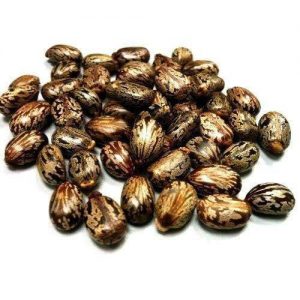Not only can castor oil extracted from castor beans be easily burned, but also be used as raw material to produce high-quality and low-emission biofuel that is comparable to standard gasoline or diesel. Therefore, castor oil is both an important raw material for chemical industry and a significant biological energy source.
Castor is a high-value oil crop whose comprehensive development can generate remarkable economic returns, which include but not limited to the following:
- the leaves of castor can be used to raise Eri silkworms, which can spin high-quality silk, which can be made into top and expensive silk fabric;
- its stalks and stems turn out to be one of the best raw materials for making papers and producing medium-density boards;
- the castor meal or cakes, after detoxification, can be processed into valuable protein to feed animals;
- even the residue resulted from the protein-producing process is actually a top organic bacterial fertilizer.
The R&D on castor oil plant as an important bioenergy can not only contribute to the virtuous cycle of ecological environment, but also play a decisive role in the adjustment of the energy structure. Therefore, there is a bright future to cultivate castor oil plant and further develop the castor industry.


Mature Castor Seeds Dehusked Castor Seeds
Castor grows abundantly in the wild in tropical and sub-tropical countries. Though ecologically recognized as a wasteland colonizer plant, it has gained the biological resource status and economic importance because of its seed oil, which is a vital industrial raw material.
Castor is among the plants with the highest oil yield potential. Its seed contains approximately 48% oil, or over 50% for some varieties. Castor oil, produced from castor beans, has long been considered to be of important commercial value primarily for the manufacturing of soaps, lubricants, and coatings, among others. Its cultivation reached a great scale in the 19th century in India, the UK, the former USSR and the USA as an industrial oilseed crop, especially as a lubricating agent, but later interest has gradually diminished, especially in USA, because of many factors. However, in the last decade, interest in castor cultivation has escalated because the industry and consumer have recognized the immense potential of castor oil to meet the demand of growth.
Therefore, the promotion of cultivation of castor has become a strategic choice in many countries. In the past few years alone, a number of countries which have cultivated castor a little or had no land under castor have now started making serious exploratory efforts at growing castor. Demand for castor oil in the world is rising constantly at 5–8% per annum.

